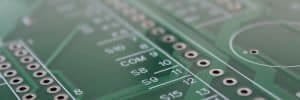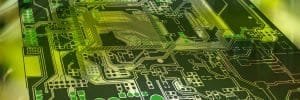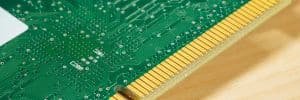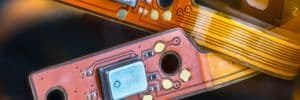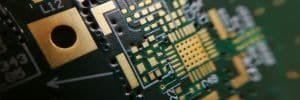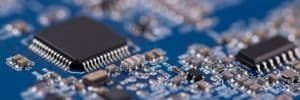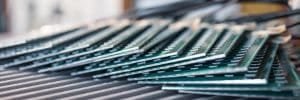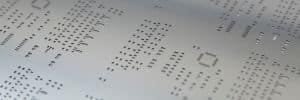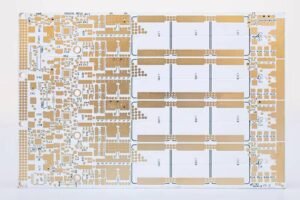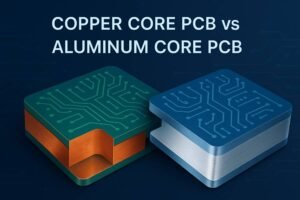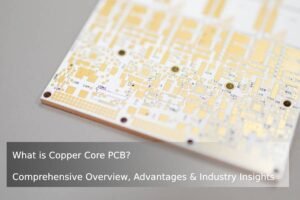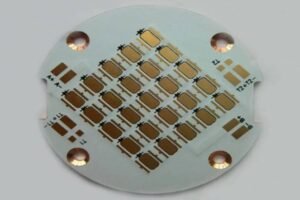Understanding the flexible PCB cost is crucial for engineers, manufacturers, and procurement professionals aiming to optimize budgets and enhance production efficiency. Flexible printed circuit boards (FPCs) offer unique benefits, including a lightweight design, high flexibility, and durability; however, their pricing varies based on multiple factors. In this guide, we explore 16 critical factors affecting FPC pricing, provide real-world examples, and share actionable strategies to reduce costs. Contact JHYPCB for a free cost estimate today!
What is a flexible PCB?
A flexible PCB (FPC), also known as flexible electronics, is a thin, lightweight circuit board made from materials like polyimide (PI) or polyester (PET). Unlike rigid PCBs, FPCs are bendable, foldable, and capable of withstanding millions of dynamic bends. With high assembly density and excellent heat dissipation, FPCs are ideal for compact devices in industries such as consumer electronics, automotive, and medical. However, these advantages come at a higher cost compared to rigid PCBs.
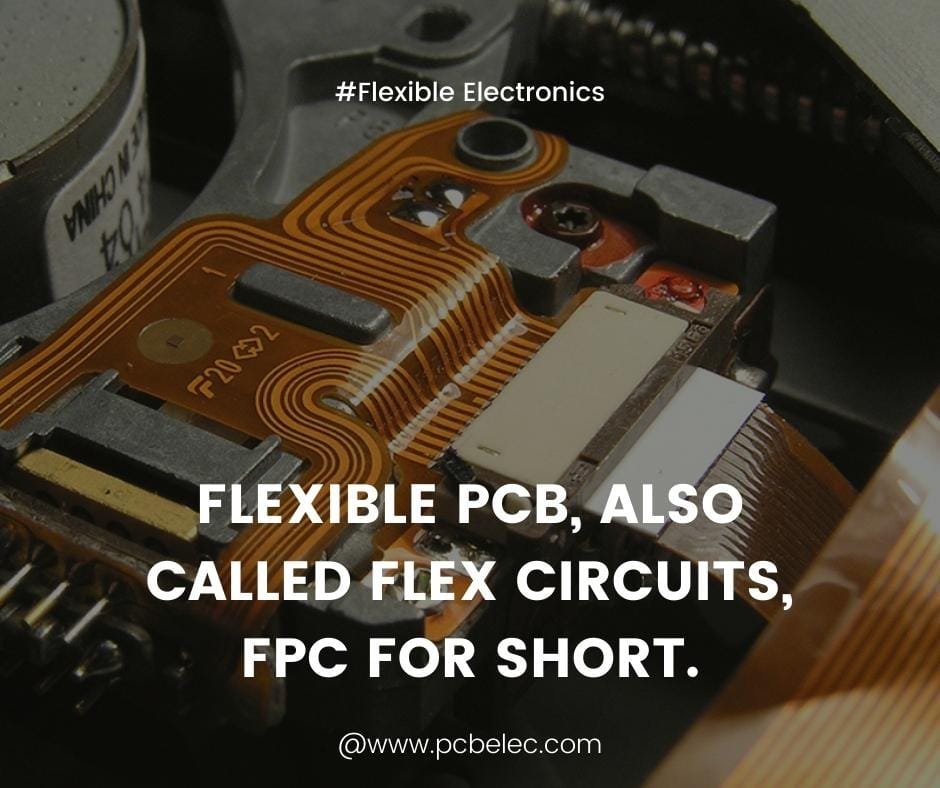
16 Factors Affecting Flexible PCB Costs
Below, we detail the key factors that determine FPC pricing, helping you make informed decisions for your next project.

1. Flexible PCB Materials
The choice of substrate material significantly impacts flexible PCB cost. Common materials include:
- Polyimide (PI): Offers superior thermal and mechanical properties but is more expensive.
- Polyester (PET): Cost-effective but less durable, suitable for simpler applications.
For example, a PI-based FPC costs 20-30% more than a PET-based one due to its enhanced performance.
Advanced Learning
2. Manufacturing Process Complexity
Complex manufacturing processes, such as advanced surface finishes (e.g., ENIG vs. immersion gold), precision shape requirements, or silkscreen circuitry, increase costs. These processes require specialized equipment and longer production times, raising FPC pricing by 10-20%.
3. Processing Difficulty
Design complexity affects costs, even with identical materials. For instance:
- Drilling holes <0.6 mm requires precision equipment, increasing costs compared to >0.6 mm holes.
- Line widths/spaces <0.15 mm are more challenging to produce than >0.15 mm.
Higher complexity leads to increased scrap rates, raising costs by 10-15% on average.
4. Panel Utilization
FPC manufacturers use copper-clad laminates in fixed sizes. The panel utilization rate—how efficiently the material is used—depends on FPC size, layer count, and batch quantity. Low utilization (e.g., <70%) increases material waste and costs.
Tip: Work with your manufacturer to optimize panel layouts and minimize waste.
5. Copper Foil Thickness
Thicker copper foils, such as 70um (2oz) or 105um (3oz), cost more than standard 35um (1oz). Thicker foils enhance conductivity but increase material costs by up to 25%.
6. Fixtures and Testing Costs
- Tooling Costs: Mass production requires dedicated fixtures, adding $500-$2,000, while prototyping often avoids these costs.
- Testing Costs: Flying probe tests (for prototypes) are cheaper than test fixtures used in mass production, which can add $1,000-$3,000.
7. FPC Dimensions
Larger FPCs require more material and specialized equipment, increasing costs. For example, a 200×100 mm FPC costs 30-40% more than a 100×50 mm one.
8. Layer Count
FPCs are classified as single-sided, double-sided, or multi-layer. Multi-layer FPCs are the most expensive due to complex manufacturing. A 6-layer FPC costs 50-70% more than a 2-layer one.

9. Acceptance Criteria
Stricter quality standards, such as IPC-A-6013 Class 1 (98% pass rate), increase costs compared to Class 3 (90% pass rate) due to lower yield rates. Higher standards can raise costs by 5-10%.
Learn More: IPC Standards for PCB Manufacturing
10. Manufacturer Capabilities
Differences in equipment and technical expertise among manufacturers lead to cost variations. Advanced facilities with automated processes may charge 10-20% more but deliver superior quality and reliability.
Advanced Learning
11. Payment Terms
Flexible payment terms (e.g., 30-day credit vs. upfront payment) can influence pricing by 5-10%. Negotiate terms with your manufacturer to optimize costs.
12. Geographic Region
FPC prices vary by region. In China, southern manufacturers often offer lower prices due to infrastructure advantages. Choosing a Chinese manufacturer like JHYPCB can save 15-30% compared to overseas options.
13. Plating Methods
Partial electroplating costs 15% more than full electroplating due to additional processing steps.
Advanced Learning
14. Gold Finger Surface Finish
Gold plating for gold fingers is 5% more expensive than tin plating, balancing cost and performance.
15. Order Volume
Larger orders qualify for bulk discounts. Ordering 10,000 units may reduce unit costs by 20-30% compared to 1,000 units.
16. Lead Time
Urgent orders incur expedited fees, increasing costs by 10-50%. Plan production schedules to avoid rush charges.
Pricing Examples: How Specifications Impact FPC Costs
To illustrate how these factors affect flexible PCB pricing, here are updated examples:
Example 1: Material and Layer Count
- 6-layer FPC, 0.2 mm thick, PI material, 1 oz copper
- Cost: $2.5-$3.5/unit (5,000 units)
- 2-layer FPC, 0.1 mm thick, PET material, 0.5 oz copper
- Cost: $0.8-$1.2/unit (5,000 units)
Insight: PI and higher layer counts drive costs due to material and manufacturing complexity.
Example 2: Copper Thickness and Surface Finish
- 4-layer FPC, 0.4 mm thick, 2 oz copper, ENIG finish
- Cost: $1.8-$2.5/unit (10,000 units)
- 4-layer FPC, 0.4 mm thick, 1 oz copper, Immersion Gold finish
- Cost: $1.2-$1.8/unit (10,000 units)
Insight: Thicker copper and ENIG finishes increase costs but enhance durability.
Example 3: Line Width/Spacing and Hole Sizes
- 2-layer FPC, 0.2 mm thick, 0.1 mm line width/spacing, 0.3 mm holes
- Cost: $1.5-$2/unit (3,000 units)
- 2-layer FPC, 0.2 mm thick, 0.2 mm line width/spacing, 0.6 mm holes
- Cost: $0.9-$1.3/unit (3,000 units)
Insight: Tighter tolerances increase manufacturing complexity and costs.
Ready to optimize your FPC design? Contact JHYPCB for expert guidance.
How to Reduce Flexible PCB Costs
Optimizing FPC pricing requires balancing design, materials, and production strategies. Here are proven tips to lower costs:
- Simplify Layer Counts: Use single- or double-sided FPCs where possible to reduce complexity.
- Order in Bulk: Larger volumes unlock discounts, saving 20-30% per unit.
- Use Standard Features: Opt for larger line widths (>0.15 mm) and hole sizes (>0.6 mm) to minimize processing costs.
- Choose Cost-Effective Finishes: Immersion gold or tin is cheaper than ENIG or hard gold plating.
- Plan Ahead: Avoid expedited fees by scheduling production early.
- Optimize Panel Utilization: Work with manufacturers to maximize material efficiency.
- Minimize Vias: Reduce blind/buried vias to simplify manufacturing.
- Select Appropriate Materials: Use PET for non-critical applications to save on material costs.
Case Study: JHYPCB helped a medical device client reduce FPC costs by 25% by switching to a 2-layer design and optimizing panel layouts.
Frequently Asked Questions
What factors most impact flexible PCB costs?
How can I reduce flexible PCB costs?
Simplify designs (e.g., use 2-layer FPCs), order in bulk, and choose cost-effective materials like PET.
Why are flexible PCBs more expensive than rigid PCBs?
FPCs require specialized materials and complex processes, increasing costs by 20-50% compared to rigid PCBs.
How does layer count affect FPC pricing?
Each additional layer increases costs by 15-25% due to manufacturing complexity.
What is the typical cost of a flexible PCB?
Costs range from $0.8-$3.5/unit for 2-6 layer FPCs (3,000-10,000 units), depending on specs.
How do lead times impact FPC costs?
Urgent orders add 10-50% in expedited fees; plan for 2-4 weeks to save.
How do material choices affect FPC pricing?
Why Choose JHYPCB?
At JHYPCB, we leverage advanced facilities and decades of experience to deliver cost-effective flexible PCB solutions. From prototyping to high-volume production, our team optimizes designs and processes to meet your budget and quality needs. Benefits include:
- Competitive Pricing: Save up to 30% with our optimized manufacturing.
- Fast Turnaround: Flexible lead times without compromising quality.
- Expert Support: Free DFM analysis to reduce costs and improve reliability.
Conclusion
Mastering the 16 factors affecting flexible PCB costs—from materials and layer counts to manufacturing processes and order volumes—empowers you to make cost-effective decisions. By applying design for manufacturability (DFM) principles and partnering with an experienced manufacturer like JHYPCB, you can achieve high-quality FPCs at competitive prices.
Ready to reduce your FPC costs? Contact JHYPCB for a free consultation and start your project now!
Related Posts
- Custom Flex PCB:Tailored Solutions for Your Applications
- Custom PCB Fabrication in China – Prototyping & Mass Production
- PCB Prototype Cost: An In-Depth Look at What Determines the Price
- PCB Assembly Cost: A Comprehensive Guide for Cost-Effective PCB Manufacturing
- How to Make Low Cost PCB Prototypes
- What Are The Types of Flexible Circuit Boards?
- Top Applications of Flexible Printed Circuit Boards in 2024
- Flexible PCB Cost: Why It’s More Expensive and How to Reduce It
- How To Reduce The PCB Manufacturing Cost?
- Rigid PCB vs Flex PCB: What Is The Difference?
- What is the defference between PCB and PCBA?
- Development and Applications of FPC Flexible PCB
- The Cheapest PCB Prototype Manufacturer-Your Best Choice
- What factors determine the price of PCB?

